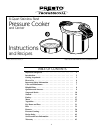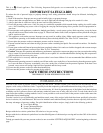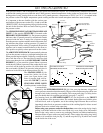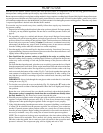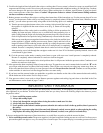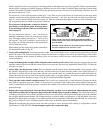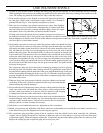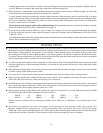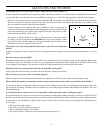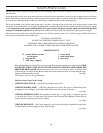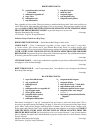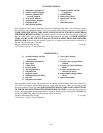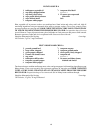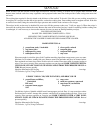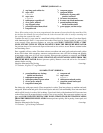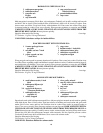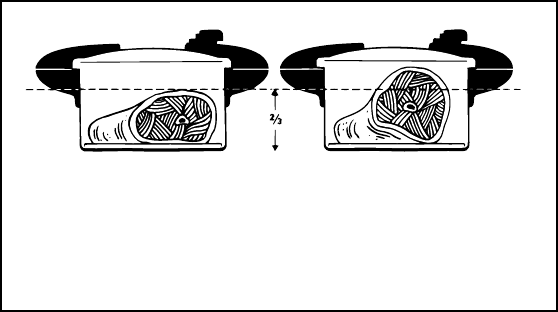
6
Follow specific recipe for the amount of liquid that should be
added to the pressure cooker. The liquid will not necessarily come
up to the fill line.
Reminder: When cooking rice, dry beans and peas, and soups,
the cooker should never be more than
1
⁄2 full.
RIGHT WRONG
Fig. K
which is designed to release excess pressure if something interferes with the pressure regulator’s operation. Neither can perform their
function if they are plugged or blocked. Plugging or blocking can occur if the cooker is overfilled. Many foods tend to expand when
cooked. If the cooker is overfilled, expansion of food may prevent the pressure relief devices from functioning. Therefore, never fill
the pressure cooker over
2
⁄
3
full.
For most foods, it is safe to fill the pressure cooker up to
2
⁄
3
full. There are a few foods like rice, dry beans and peas, and soups which
expand so much when cooking that the cooker should never be more than
1
⁄
2
full. Also, dry beans and peas must be presoaked (see
page 31). And rice must be cooked in a bowl (see page 33). There are some foods that expand so much as a result of foaming, froth-
ing, and sputtering that you should never pressure cook them.
Never pressure cook applesauce, cranberries, rhubarb,
pearl barley, cereals, pastas, grains, dried soup mixes,
or any dried beans and peas which are not listed in the
chart on page 32.
For your convenience, both the
2
⁄
3
and
1
⁄
2
full levels are
marked by indentations on the side of the pressure cooker
body. The upper marking indicates the
2
⁄
3
full level and
the lower the
1
⁄
2
full level. In addition, in each section of
the recipes you will find instructions on the maximum fill
level for each type of food.
When cooking any food, do not let any portion extend above
the maximum fill mark (see Fig. K).
2. Always add cooking liquid. If an empty pressure cooker is left on a hot burner or if a cooker boils dry and is left on a heated
burner, the cooker will overheat excessively causing discoloration or warping of the cooker, possible melting of the cooker
bottom, and damage to the stovetop. If melting occurs, do not remove cooker from the cooking surface until the cooker has
cooled completely.
3. Always look through the vent pipe before using the cooker to make sure it is clear. If the vent pipe is plugged, the pressure
regulator cannot release steam and thus cannot relieve excess pressure. Pressure may then build to unsafe levels. To clean the
vent pipe, see page 7.
4. Always fully close the pressure cooker. The cover handles must be directly above the body handles. Your pressure cooker
has specially designed lugs on the cover and body which lock the cover in place when the cooker is fully closed. However, if
the cooker is not fully closed, the lugs cannot lock the cover onto the body. It’s possible that pressure could build inside the
cooker and cause the cover to come off and result in bodily injury or property damage. Always be sure the cover handles are
directly above the body handles (see page 4, Fig. H). Do not turn past handle alignment.
5. Never open the cooker when it contains pressure. The air vent /cover lock provides a visual indication of pressure inside the
unit. When it is up, there is pressure. When it is down, there is no pressure in the cooker, and it can be opened. If the pressure
cooker is opened before all of the pressure is released, the contents of the cooker will erupt and could cause bodily injury or
property damage.
6. Replace the overpressure plug if it becomes hard, deformed, cracked, worn or pitted, and when replacing the sealing
ring. Failure to replace the overpressure plug could result in bodily injury or property damage. The overpressure plug is a
secondary pressure relief valve which is designed to relieve excess pressure by releasing from the cooker cover in the event that
the vent pipe should become blocked. The overpressure plug is made of rubber, and when new, is soft and pliable. Over time,
depending on the frequency and type of use, rubber becomes hard and inflexible. When hard and inflexible, the overpressure
plug loses its ability to act as a secondary pressure relief valve. It should be replaced immediately.
Should the overpressure plug ever be forced out of the cover due to excess pressure while cooking, it is important to call the
Test Kitchen at 1-800-368-2194. Do not attempt to replace the overpressure plug.



